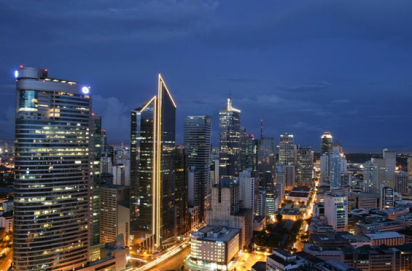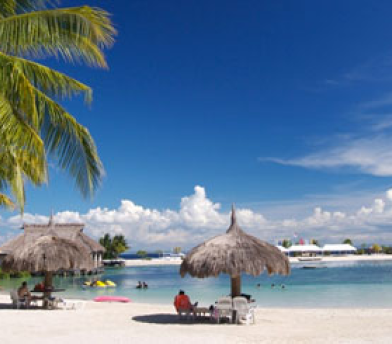
The government recognizes the pivotal role of private sector investments and, thereby, commits to continuously enhance the business climate. Foreign investments are encouraged to fill in capital gaps, help provide employment, increase production, and provide a base for the overall development of the economy. Investment rules and regulations have thus been liberalized to facilitate entry of foreign investments.

Anyone, regardless of nationality, is welcome to invest in the Philippines. With the liberalization of the foreign investment law, 100% foreign equity may be allowed in all areas of investment except those reserved for Filipinos by mandate of the Philippine Constitution and existing laws. What requirements must be complied with before a foreign corporation can do business in the Philippines? A foreign corporation must first secure the necessary licenses or registrations from the appropriate government bodies. In the case of corporations or partnerships, the necessary incorporation papers from the Securities and Exchange Commission must first be obtained. In the case of single proprietorship, registration from the Bureau of Trade Regulation & Consumer Protection of the Department of Trade and Industry must be secured.

Foreign investors investing in the Philippines can now lease private lands up to 75 years. Based on R.A. No. 7652, entitled “Investor’s Lease Act”, lease agreements may be entered into with Filipino landowners. Lease period is 50 years, renewable once for another 25 years. For tourism projects, the lease shall be limited to projects with an investment of not less than US$5M, 70% of which shall be infused in said project within 3 years from signing of the lease contract. For more information download our Primer on Tourism Investment in the Philippines.

In line with the Government’s thrust of making Philippines a competitive country in the global environment through various investments, investors, both existing and prospective should be well informed of the economic environment and regulations. Information about the economic environment of the country and industry is essential because it will help investors assess possible opportunities and avoid possible threats at the same time. Regulations, on the other hand, provide the guidelines with which investments must be done.
This Investment Portfolio has been prepared by Financial Advisors Inc. to address prospective foreign investors in the Philippines, particularly in the tourism industry. It aims at providing prospective investors information about the investment climate of the country, costs of doing business, investment procedures, and laws pertaining to tourism and so on. Investment climate on the tourism industry itself is included so investors can gauge if such climate is conducive to their investments. The portfolio brings in together salient facts needed by the investors to not only entice them to invest in the Philippines but also make sure that such investments generate acceptable rate of return to the investors and more importantly, provide socio-economic benefits to the country.
The Philippines, with its strategic location, is a gateway to the huge Asian market. Its considerable attractions as an investment destination include:
Wide incentives are available to foreign investment in activities that significantly contribute to national industrialization and socioeconomic development, and in export-oriented enterprises. It is also available to export oriented enterprises within ecozones administered by PEZA or similar agency.
Income tax holidays of three to eight years are a central feature in most incentive packages.
Enterprises locating in special economic zones may be entitled to a special 5% rate of tax on their gross income (sales less direct costs) in lieu of all other national and local taxes. Enterprises registered under Subic Bay Metropolitan Authority (SBMA), which administers the conversion of US Military based.


Situated in the northwestern coast of Luzon, Laoag and Vigan are two most popular towns in Region I, or the Ilocos Region. Laoag has an international airport which caters to flights from Taiwan, Hong Kong and Guangzhou. The quaint way of life and setting of Laoag adds to its charm to many visitors. Vigan on the other hand, has the best preserved example of a planned Spanish colonial town in Asia with its architecture reflecting fusion of cultural elements from elsewhere in the Philippines with those of Europe creating a unique townscape.

Banaue, one of the nine (9) towns of Ifugao province, is home to the world famous Ifugao Rice Terraces dubbed as the "Skyway to the Sky". Lying high in the Cordillera mountain ranges, it is indeed a sight to behold and to cherish for a lifetime. The length of the rice terraces if connected end to end would encircle half of the globe. It is the artistic center of the Ifugao carvers and Ikat weavers. Since daily existence in the locality permanently unites man with nature, Banaue is inevitably positioned as an eco-tourism and historicoculture destination.

Subic and Clark together form a hub of air transport, tourism, trade, finance and industry in Central Luzon. Both former bastions of U.S. military might, they are now sites to the booming freeports in the Philippines, are fast developing industrial and tourism destinations. Jungle safaris, ocean adventures, shopping, fine dining, gaming and nightly entertainment shows are among the many activities that visitors may enjoy.

Metro Manila or the National Capital Region is the major gateway to the country’s alluring 7,107 islands and the nation’s heart and soul. This cosmopolitan region is an intriguing blend of the past and present, of striking contrast and contradictions, blessed with significant historical and cultural destinations; it is likewise enriched with modish skyscraping edifices and state of the art shopping malls. Believed to be the ultimate city to millions of Filipinos living outside the metropolis...

The nature sanctuary of the Philippines, Palawan is wrapped in mantels of rainforests, dive sites, majestic mountains, primeval caves and immaculate beaches, surrounded by coral shelf abundant of varied and colorful marine life, and boasts of exotic flora and fauna, like the mousedeer and scaly anteater. Its waters are great not just for diving but also for fishing and has miles of sub-surface coral and rainbow reef walls surrounding the coasts and coves teeming with a great variety of marine life.

The palm-studded island of Boracay, prides itself of its white, talcum-fine beach, balmy weather, and warm crystalline waters .It is located at the northwestern tip of Panay Island in Western Visayas. The best part of the island is the four-kilometer White Beach known as the “finest beach in the world” fronting the first-class resorts. On the eastern side lies Bulabog beach, drawing enthusiasts from all over the world especially during the peak season from November to March. In January, it is the site of an International Funboard Cup.

The island province of Bohol is one of the loveliest islands in Visayas and an hour away from Cebu by boat. Skimmed by gentle coves and white sand beaches, Bohol is home to the tarsier, the smallest primate in the world and the 1,268 perfectly cone-shaped mounds dubbed as "The Chocolate Hills". Also, some of the best dive sites in the country are found in two of its islands: Balicasag and Pamilacan.

Popularly known as the Queen city of the South, Cebu City prides itself as a thriving and highly urbanized center and second to Manila’s bustling metropolis. It is also home to numerous white sand beaches, crystal blue waters and swaying palms, making it the perfect place for business and leisure. Five popular tourist destinations are located nearby namely, the Mactan Island, Malapascua Island, Moalboal town, Panagsama Beach and Olango Island.

The nature sanctuary of the Philippines, Palawan is wrapped in mantels of rainforests, dive sites, majestic mountains, primeval caves and immaculate beaches, surrounded by coral shelf abundant of varied and colorful marine life, and boasts of exotic flora and fauna, like the mousedeer and scaly anteater. Its waters are great not just for diving but also for fishing and has miles of sub-surface coral and rainbow reef walls surrounding the coasts and coves teeming with a great variety of marine life.